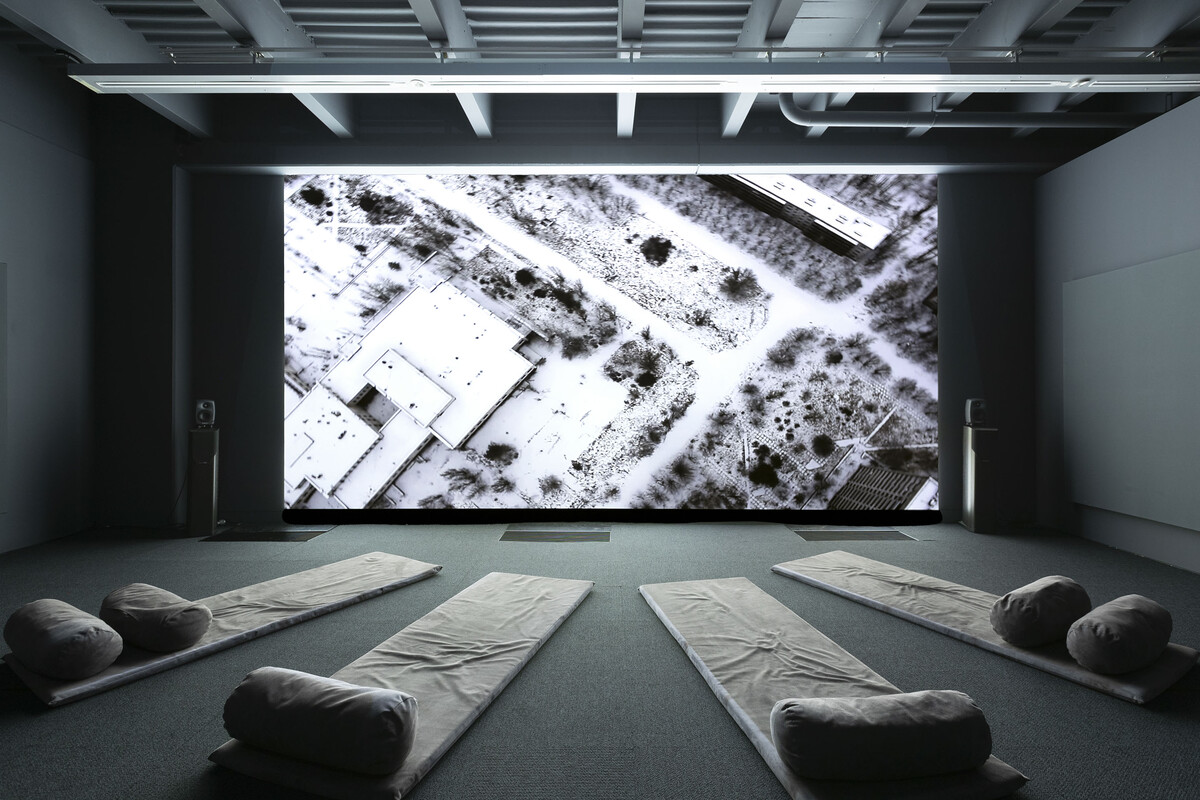Infra
Infrastructure: power, politics and imagination – e-flux Education

Artists: Matthew Galloway, Doris Lusk, Raúl Ortega Ayala. Curated by Sophie Thorn & Millie Riddell.
Infrastructure: power, politics and imagination at Te Pātaka Toi Adam Art Gallery brings together three discrete exhibitions tracing moments from the recent past, centred around major infrastructural projects, both real and imagined.
Playing off the unique architecture of the gallery with large-scale projections and sonic interventions spread throughout the building, Matthew Galloway’s The Power that Flows Through Us explores the construction, socio-political context and history around the Clyde Dam, New Zealand’s third-largest hydroelectric plant. The dam is a legacy of controversial former right-wing New Zealand Prime Minister Robert Muldoon and his “Think Big” initiative, a series of large-scale infrastructural projects initiated in the late 1970s and early 1980s. Galloway’s project unpacks how this narrative has shifted over time with the dam becoming increasingly tied to left leaning political narratives around the successful use of hydropower in Aotearoa New Zealand.
Doris Lusk’s Imagined Projects: Forty Years On, reunites five of the seven works from one of Lusk’s last major series for the first time since their original exhibition in 1984. This series by Lusk, a key figure in the New Zealand modernist scene in the mid twentieth century, is the culmination of six decades of thinking around landscape in Aotearoa New Zealand. The works in Imagined Projects depict imagined industrial sites inserted into fictional earthy landscapes, sites that do not sit in harmony with nature but are juxtaposed with it. They illustrate the tensions at play when large extractive infrastructural interventions are made into the landscape. They reflect Lusk’s admiration for the “monstrous structures” and exaggerated architecture of eighteenth-century Italian artist and architect Giovanni Battista Piranesi (1720–78).
Raúl Ortega Ayala’s The Zone (2013–20) documents the legacy of the 1986 Chernobyl nuclear accident through video, photographs and first-hand accounts of former residents of the now abandoned city of Pripyat. Shot over seven years and multiple visits to the 30 km “exclusion zone”, Ortega Ayala amassed a substantial archive of images and video footage, documenting the repercussions of failed technological development on a monumental scale. The Zone combines first-hand accounts of the accident’s ongoing impact with images of an abandoned city given over the nature and decay, drawing our attention to the lingering paraphernalia of an expired political system and the traces of the inhabitants who lived there. Underpinning both The Zone and Ortega Ayala’s ongoing practice is an interest in the ways in which societies remember, forget or repress their past.
Together, these exhibitions all focus on power: both in the sense of the physical creation of energy and the political thrust behind large infrastructural projects. They consider the landscape and how environmental conditions are altered through these extractive processes. They think about the people, both the key political players who make decisions and those whose lives are irrevocably changed through their actions. Brought together in this way, they call attention to how we today might imagine our futures by thinking about the recent past.
Te Pātaka Toi Adam Art Gallery is the art gallery of Te Herenga Waka—Victoria University of Wellington located in Te Whanganui-a-Tara Wellington, the capital city of Aotearoa New Zealand. It is a forum for critical thinking about art and its histories as well as the professional structure within which Ngā Puhipuhi o Te Herenga Waka—Victoria University of Wellington Art Collection is managed. The gallery’s programmes aim to test and expand art form and disciplinary boundaries and create new opportunities to bring artists together and generate fresh conversations. The gallery is a remarkable architectural statement designed by the late Sir Ian Athfield, one of Aotearoa New Zealand’s foremost architects.







:max_bytes(150000):strip_icc()/roundup-writereditor-loved-deals-tout-f5de51f85de145b2b1eb99cdb7b6cb84.jpg)


